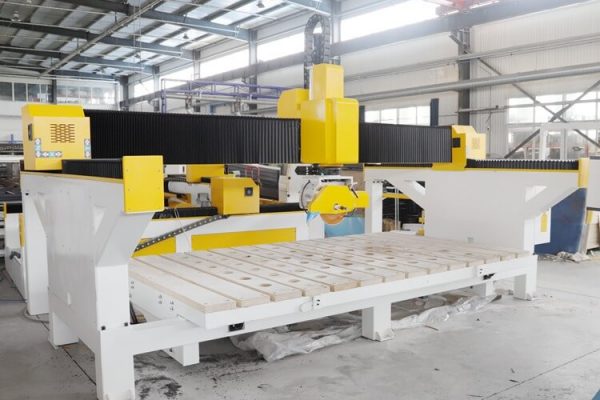Project Report For Stone cutting and polishing unit
Introduction
Project Report For Stone Cutting And Polishing Unit is as follows.
A stone cutting and polishing unit is a facility that converts raw stone blocks into finished stone products by cutting and polishing procedures. This business is important in the building and architectural industries because it provides high-quality stone products for a variety of uses. The selection of raw stone blocks, which can be obtained from quarries or mines, is the first step in the process.
Following that, the blocks are carried to the cutting and polishing unit. Large saws with diamond-tipped blades are used to slice the blocks into slabs of the correct thickness during the cutting process. Depending on the intended purpose, the slabs are further treated to produce precise dimensions and forms.
The stone is polished once it has been carved into the correct forms. Polishing improves the look of the stone by making it smooth and lustrous. To eliminate rough edges and surface flaws, polishing machines equipped with abrasive pads or diamond tools are used, resulting in a refined and aesthetically pleasing product.
Stone cutting and polishing operations utilise expert individuals who have been trained to operate machinery and work with various sorts of stones. Depending on the availability and demand in the region, these units may specialise in working with certain types of stone, such as granite, marble, limestone, or slate.
These units’ completed stone products are utilised in a variety of applications, including flooring, wall cladding, worktops, monuments, sculptures, and ornamental items. Natural stone is a popular choice for both interior and outdoor design projects due to its versatility and durability.
Some stone cutting operations may offer value-added services such as edge profiling, surface treatments, and customised designs in addition to cutting and polishing to satisfy the unique needs of clients.
It is critical for stone cutting and polishing units to follow safety and environmental rules. Dust control technologies, waste management practises, and water recycling techniques are used to reduce environmental impact while also ensuring worker safety.

Process Of Stone Cutting And Polishing Unit
- Block Selection: Raw stone blocks are chosen for their quality, colour, and compatibility for the intended purpose.
- Transportation of Selected blocks: The selected blocks are carried to the cutting and polishing facility, often utilising heavy gear or trucks.
- Cutting: Using huge saws fitted with diamond-tipped blades, the blocks are cut into slabs of the necessary thickness. Multiple cuts may be required to get the correct size and forms.
- Surface Grinding: The stone slabs’ surfaces are ground smooth to eliminate any roughness, imperfections, or saw marks. Grinding equipment with abrasive pads or diamond tools are used for this.
- Polishing: Polishing machines are used to obtain a polished finish. These machines run the slabs through abrasive pads or polishing chemicals to achieve a smooth and lustrous surface.
- Quality Inspection: After polishing, the completed stone goods are scrutinised for any flaws or faults. To ensure great quality, any necessary touch-ups or repairs are performed.
- Packaging and delivery: To safeguard the final stone items during shipment, they are professionally wrapped. They are then either provided to clients or saved for further use.
Market Potential Of Stone Cutting And Polishing Unit
The Stone Market is expected to increase at a CAGR of 3.55 per cent between 2020 and 2025, reaching INR 2,430 billion.
Stone’s use in residential and commercial flooring and wall cladding is predicted to rise at a significant rate because of its durability, hardness, and beautiful appeal. Quartzite, slate, calcareous, sandstone, marble, granite, and others are examples of natural stone.
Due to an increase in residential buildings and urbanisation, floor coverings are expected to increase market demand. Slate, marble, limestone, granite, and sandstone are the most prevalent natural stone flooring options. Natural stone flooring is an excellent choice for a variety of reasons, both aesthetic and functional.
Unlike any other building material, the mountain-born properties of natural stone are essential in creating a connection between indoor and outdoor areas that will endure a lifetime or more. It is important to note that stone tiles are clean and ecologically safe.
The burgeoning middle-class population in metropolitan regions is driving up demand for new residential and non-residential constructions. Furthermore, the demand to build educational and healthcare facilities is likely to propel the business in the next years.
Project Report Sample On Stone Cutting And Polishing Unit
Need Help?
Create 100% Bankable Project Report

